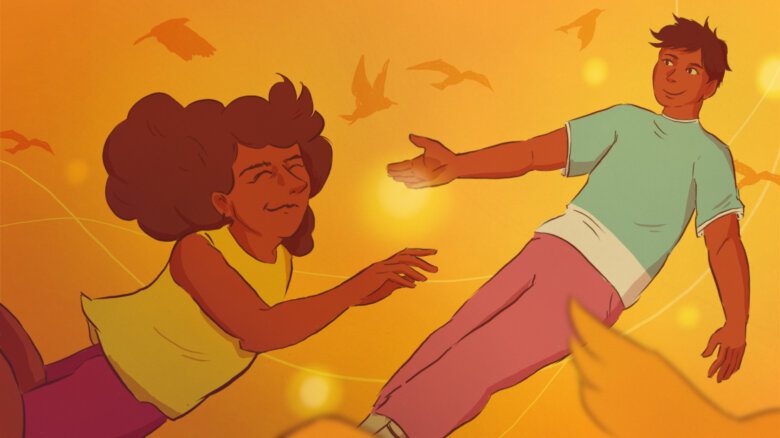Forget Brokeback Mountain — what if our perceptions of cowboys as macho, invincibly heterosexual, homophobic manly-men are all wrong?
The 19th-century American frontier was one of the the gayest periods in the country’s history, sexually speaking. Scottish-born adventurer and noted homosexual William Drummond Stewart knew what he’d find in the untamed west.
Born on Dec 26, 1795, Stewart was the second son of a Scottish baronet. His family’s seat was located at Murthly Castle, about a day’s journey north of Edinburgh. Stewart had the unfortunate position as a second son only meant to inherit a modest allowance, so when he was 17 his family bought him a position in the British Army’s cavalry— a way for the somewhat foppish adolescent to make a name for himself.
Stewart would see combat in the successful Waterloo campaign against Napoleon Bonaparte and was eventually, through familial connections, raised to the position of captain in 1820 before the young man retired on half pay soon after.
Although it’s undocumented if he ever consummated his homosexual feelings in these early years, Stewart was certainly aware of them, and of the dangers they posed in a society on a moral crusade. He wrote two autobiographical novels, but named his narrator “Edward Warren.” In the book, Warren describes his inner struggle with his desires.
“However I may be alive to surprise or admiration, or to those mysterious sympathies which are electrically conveyed by the touch as well as by the sight, I have never been conscious of betraying it by outward emotion,” he writes.
After his military career, Stewart split his time between his family’s estate in Scotland and their London home in the Belgravia district. He learned quickly that a moral campaign against sodomites and increased police prosecution throughout the early 19th century made the UK a less than ideal place for the homosexually inclined.
Perhaps to prove he could, or at least throw off the scent, Stewart managed to impregnate a young servant girl, and they had a son. Stewart’s family fabricated a marriage to her, conveniently nine months before the birth, and he then set up a household for his new wife and child in Edinburgh, though he never lived with them. He maintained a distant but amicable relationship with his son, but had little contact with his wife.
In Men in Eden: William Drummond Stewart and Same-Sex Desire in the Rocky Mountain Fur Trade, author and historian William Benemann muses that it would have been an enviable set-up: a lowborn mistress and a bastard child, proving the still unmarried man’s heterosexuality. Stewart’s fantasies for an all-male world untainted by female contaminant did not include a “beard,” like his fake wife. He would soon find this masculine utopia in the American west.
The American West was literally a man’s world. According to the Annenberg Learner’s article, “Paradise of Bachelors,” the 1850 California census showed that more than 90 percent of the state’s population consisted of men, which likely reflected the rest of the fledgling territories’ population. This was just before the explosion caused by the Gold Rush, when the population would double within the span of two years. Life for African-American, Chinese, Latino, European and Anglo-American immigrants in the American frontier consisted of mining, cattle herding, ranching, hunting and trapping, or the military — work that mostly excluded women.
Annenberg Learner’s article cites historian Susan Lee Johnson, who says this homosocial society necessitated “drastically altered divisions of labor in which men took on tasks that womenfolk would have performed back home.”
Groups of all-male units would build little homes together, working their mining claims, sharing a common fund of money divided equally with men who had never cooked, washed or mended clothing before learning to do so for their newfound familial unit. “Paradise of Bachelors” notes that “household intimacy inherent in camp life could also transcend racial difference. White men amicably shared tents, food, and economic responsibilities with Chinese, African American, and Latino miners.”
In this all-male society, lines between emotional and sexual relationships blurred easily. Depending on the racial group each labourer came from they may have had their own ideas about men who have sex with men, but there was no concept of “homosexual” or “heterosexual.” The article notes:
As traditional notions of “normal” gender roles were challenged and unsettled, men could display both subtly and openly the erotic connections they felt for other men. When the miners at Angel Camp in southern California held dances, half of the men danced the part of women, wearing patches over the crotches of their pants to signal their “feminine” role. Men routinely shared beds in mining communities and on the range, and cowboys and miners settled into partnerships that other men recognized (and sometimes referred to) as “bachelor marriages.”
Advertisement
Colonists making a life in the so-called “New World” also had role models — societies who had lived there for thousands of years. While the term “berdache” is now considered a pejorative, more than a hundred North American nations and communities had words or roles for people who expressed unique gender and sexual identity beyond the male-female or man-plus-woman binaries.
Our Scottish dandy, William Drummond Stewart, first arrived in America in 1832, when he was 36 years old. He began his new life in St Louis, Missouri, where he accompanied a pack train west to an 1833 “rendezvous” of hunters and trappers in the Green River Valley of Wyoming. At the rendezvous he met a renowned French Canadian-Cree hunter named Antoine Clement, who became his lover.
As Benemann notes from Stewart’s autobiography, Warren (Stewart’s narrative stand-in), meets a “seductively handsome American Indian, and indeed it was not uncommon for a European who had carefully repressed his homosexuality at home to find it blossoming — to his dismay and to his wonderment — once he encountered Native Americans so strikingly handsome that it became almost a cliché to compare them to a naked Adonis or Apollo.”
The couple would stay together for a decade, even travelling to Murthly Castle in 1839 after the death of his childless older brother, to take up his position. They lived in Dalpowie Lodge on the estate, and he presented Clement first as a valet, then as a footman. Clement was apparently unhappy in Scotland, and so they spent a significant amount of time traveling, including a visit to the Middle East, before eventually returning to America together.
Stewart had a dream of recapturing the glory age of the frontiersman rendezvous, although with a twist. Benemann describes a group of hunters at the time finding “a rollicking medieval market faire magically transported to the American West. Festive pennants waved above a jumble of colorful tents. Here and there naked men crawled out from beneath striped canvas and ran to a nearby lake, where they hooted and splashed in the morning sunlight.”
The revellers, around 80 of them in total, were “mostly young men in their teens and twenties, and those who were clothed could be seen sporting the most fantastic and colorful costumes,” that being authentic medieval costumery at best, or simply the styles of Broadway dandies at worst. Essentially a big, gay, medieval-themed orgy.
Stewart was at the centre of it all, literally, where his “large striped marquee stood in regal splendor, a white pennant waving from its peak.”
Stewart’s infamous rendezvous ended in his leaving the country after the expedition returned to St Louis, soured by “camp tensions turned into nasty rumours”— Benemann doesn’t specify what these rumours were, but we can certainly guess. Stewart was forced to leave America and his lover behind. America was being tamed under the steady march of European heterosexuality, and Stewart lost his paradise of bachelors.
History Boys appears on Daily Xtra on the first and third Tuesday of every month. You can also follow them on Facebook.


 Why you can trust Xtra
Why you can trust Xtra


